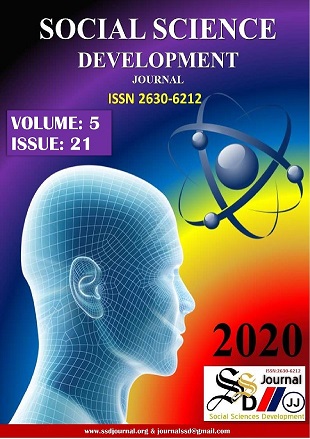GÖREME, SAKLI CHURCH, EVALUATION OF THE MONASTERY REFECTORIES
DOI:
https://doi.org/10.31567/ssd.259Keywords:
Cappadocia, Göreme, Monastery, RefectoryAbstract
Rock-carved churches, which have an important place in the architectural texture of the Cappadocia
region, have an important place as cultural assets that show the social, economic and religious
structure of the period in which they were built, and should be protected with their historical and
aesthetic values. In the topographic structure of the region, the presence of easily workable and
durable tuffs creates an easy place to live; since the valley slopes are suitable for hiding, it has been
a region where various cultures, states and societies live. Along with the churches and monasteries
built during the Eastern Roman Empire Period, the Cappadocia Region appears as an important
religious center for Christians.
There are many monasteries, churches and chapels of different sizes in Göreme Valley. Monasteries
complexed with the refectory are considered one of the largest monastic formations in the region.
Apart from the upper valley, which is called the Göreme Open Air Museum today and which
contains many important religious buildings for the region, there are many religious functions in the
lower valley east of the nearby town of Göreme. Saklı Church is located on the slope of the rock
mass located in the lower valley 500 m west of Göreme Open Air Museum. The refectories located
in the area where the lower valley churches, whose formations are dated to the 10th century, are
located in the northwest of the Saklı Church. Refectories were built with rock carving technique
with a long table (trapeza) and benches, generally rectangular plan, with various side spaces such as
kitchen and pantry. Except for simple iron gates for the protection of religious structures outside the
Göreme Open Air Museum, there is not much protection measures. In addition, there are also places
used by the businesses in the vicinity with functions such as cafes, warehouses and stables
according to the needs.
In this study, the original uses, plan typologies and architectural features of the refectories, which
are an important part of the religious ritual, have been evaluated in Cappadocia, Göreme Church,
based on the historical development of monastic architecture. The diversity of the monastery
refectories in Cappadocia and the feature of being a document reflecting the religious structure of
the period in which they were built were emphasized.




